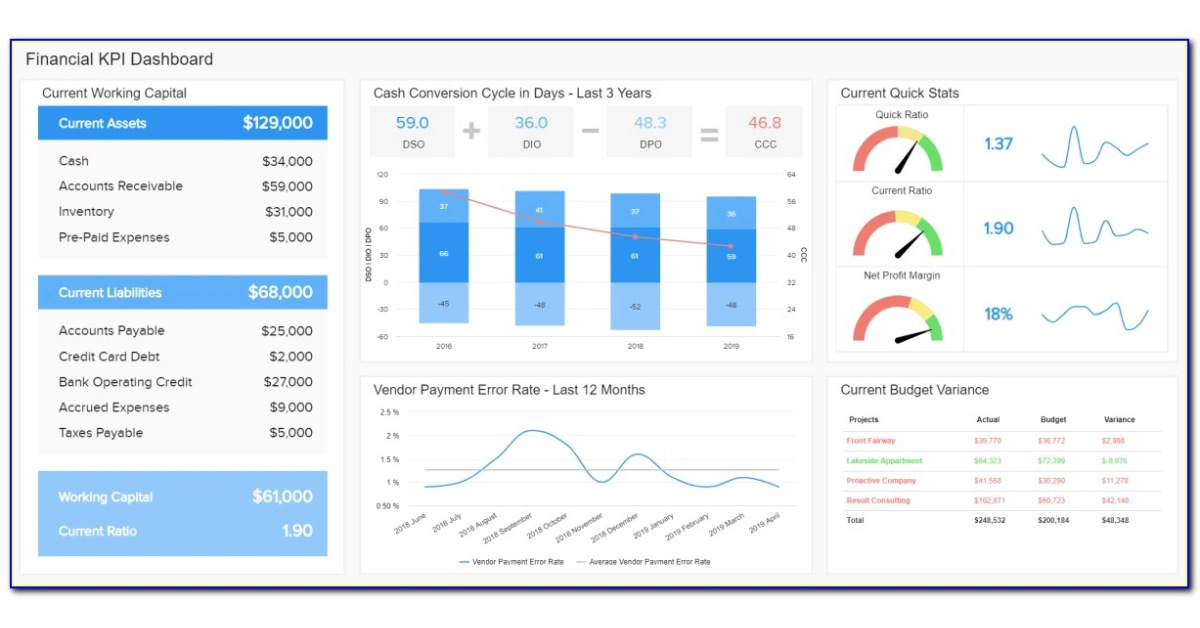
How Intranet Helps Improve Communication and Collaboration in a Hybrid Workplace
As companies move towards a hybrid work model, the need for efficient and effective communication and collaboration becomes even more critical. With a distributed workforce, it can be challenging to keep everyone connected and working towards the same goals. This is where an intranet can play a vital role. In this article, we will explore how intranet helps improve communication and collaboration in a hybrid workplace.
Introduction
With the rise of hybrid workplaces, companies are now leveraging technology to help their employees work together more effectively, regardless of their physical location. An intranet is an excellent tool that organizations can use to facilitate communication, collaboration, and access to information. It is a secure and centralized platform that employees can use to stay connected and work more efficiently. In this article, we will explore the benefits of an intranet in a hybrid workplace and how to implement it.
What is an intranet?
An intranet is a private network that organizations use to share information and resources among their employees. It is a closed system that is accessible only to authorized personnel within the company. Intranets typically provide access to various tools such as email, document management, employee directories, and other relevant applications.
Benefits of an intranet in a hybrid workplace

In a hybrid workplace, where employees work remotely or from different locations, an intranet can provide a centralized platform for communication, collaboration, and access to information. This can help break down silos and improve cross-functional communication, enabling remote workers to work more efficiently and effectively with their colleagues in the office. An intranet can also help organizations save time and reduce costs associated with managing and distributing information, such as newsletters, memos, and other company updates.
Moreover, an intranet can provide a secure and reliable platform for sharing sensitive information and resources, such as employee files, financial data, and confidential company information. This can help organizations maintain compliance with data protection regulations, reduce the risk of data breaches and other security incidents, and improve overall risk management. Additionally, an intranet can also help organizations streamline internal processes and workflows, such as HR tasks, document management, and project management.
Overall, an intranet can provide numerous benefits to a hybrid workplace, including improved communication and collaboration, increased productivity, reduced costs, enhanced security and risk management, and streamlined internal processes. To maximize these benefits, it is essential for organizations to define their goals, select the right solution, customize it to align with their brand and culture, train employees effectively, and monitor its effectiveness continually. With the right approach, an intranet can help organizations stay connected and work more effectively, regardless of their physical location.
Facilitating Remote Work
Facilitating remote work is one of the critical benefits of an intranet in a hybrid workplace. By providing a centralized platform for communication, collaboration, and access to information, an intranet can help remote workers stay connected with their colleagues in the office and work more effectively from a remote location. This can help organizations reduce the costs and overhead associated with maintaining physical office space and enable employees to work from anywhere in the world.
Moreover, an intranet can provide employees with the tools they need to work productively and efficiently, regardless of their location. For example, an intranet can offer features such as video conferencing, instant messaging, project management tools, and shared calendars, all of which can help remote workers stay connected and collaborate effectively with their colleagues. Additionally, an intranet can provide access to company resources such as policies, guidelines, and training materials, ensuring that all employees have access to the information they need to perform their jobs effectively.
Finally, an intranet can also help organizations maintain a sense of community and culture, even when employees are working remotely. For example, an intranet can provide a platform for employee recognition and feedback, virtual events, and social networking, all of which can help remote workers feel more connected to their colleagues and the organization.
Providing Secure Access to Information
In a hybrid workplace, providing secure access to information is crucial to maintaining the confidentiality and integrity of sensitive data. An intranet can provide a secure platform for employees to access the information they need to perform their jobs effectively, without compromising data security or exposing the organization to risk. This is particularly important for organizations that handle sensitive data, such as financial information, intellectual property, and confidential company information.
An intranet can provide secure access to information in several ways. For example, an intranet can offer password-protected access to certain documents or folders, ensuring that only authorized personnel can access sensitive information. An intranet can also provide secure channels for communication and collaboration, such as encrypted email and file-sharing tools, to ensure that information is transmitted securely.
In addition, an intranet can provide real-time monitoring and auditing of information access and usage, enabling organizations to identify and address potential security breaches or unauthorized access quickly. This can help organizations maintain compliance with data protection regulations, reduce the risk of data breaches, and enhance overall risk management.
Finally, an intranet can provide employees with the tools they need to work securely from a remote location. For example, an intranet can offer secure virtual private network (VPN) access to the organization’s network, enabling remote workers to access company resources securely. An intranet can also provide guidelines and training on how to work securely from a remote location, such as avoiding public Wi-Fi networks or using secure passwords.
Enhancing Collaboration and Productivity

In a hybrid workplace, enhancing collaboration and productivity is a key factor in ensuring that employees can work together effectively, regardless of their location. An intranet can play a vital role in enhancing collaboration and productivity by providing a platform for communication, sharing of ideas, and access to information and resources.
One way an intranet can enhance collaboration is by providing real-time communication tools. An intranet can offer chat or instant messaging features that allow employees to communicate with each other quickly and easily, even if they are not in the same physical location. An intranet can also provide video conferencing or teleconferencing capabilities that enable virtual meetings, making it easier for remote employees to participate in discussions.
In addition, an intranet can enhance collaboration by providing a centralized platform for sharing information and resources. An intranet can offer shared calendars, project management tools, and document repositories that enable employees to collaborate on projects, share knowledge, and access the resources they need to perform their jobs effectively.
An intranet can also enhance productivity by reducing the amount of time employees spend searching for information or waiting for responses from colleagues. By providing a centralized platform for communication and access to information, an intranet can streamline workflows and reduce delays, enabling employees to complete their tasks more efficiently.
Finally, an intranet can enhance collaboration and productivity by providing a platform for employee engagement and feedback. An intranet can offer forums or discussion boards where employees can share ideas, ask questions, and provide feedback on company policies or procedures. This can help foster a culture of collaboration and continuous improvement, where employees feel empowered to contribute to the success of the organization.
Boosting Employee Engagement
In a hybrid workplace, it can be challenging to maintain employee engagement and a sense of connection to the organization. An intranet can play a crucial role in boosting employee engagement by providing a platform for communication, collaboration, and recognition.
One way an intranet can boost employee engagement is by providing a centralized platform for communication. An intranet can offer tools such as forums, discussion boards, and chat features that enable employees to interact with each other and share information, even if they are not in the same physical location. This can help foster a sense of community and connection among employees, regardless of their work environment.
An intranet can also boost employee engagement by facilitating collaboration and recognition. By providing a platform for sharing ideas, feedback, and recognition, an intranet can help employees feel valued and connected to the organization. For example, an intranet can offer a recognition program that allows employees to acknowledge the contributions of their colleagues, fostering a culture of appreciation and teamwork.
Finally, an intranet can boost employee engagement by providing access to learning and development opportunities. An intranet can offer training modules, online courses, and resources that enable employees to develop their skills and advance their careers. This can help employees feel invested in their personal and professional growth and can contribute to a sense of loyalty and commitment to the organization.
Personalization and Customization
Personalization and customization are crucial aspects of an effective intranet in a hybrid workplace. An intranet that is tailored to the specific needs and preferences of its users can help enhance productivity, collaboration, and employee engagement.
One way an intranet can offer personalization is by allowing users to customize their dashboard or homepage. By enabling users to add and arrange widgets, news feeds, and other content, they can access the information they need quickly and easily. Additionally, an intranet that offers personalization options can help users feel more engaged and invested in their work environment.
Another way an intranet can provide personalization is by using user data to offer targeted content and recommendations. For example, an intranet can suggest relevant training modules, news articles, or resources based on an individual’s role, department, or past activity on the intranet. This can help users save time and enhance their productivity by providing them with information that is specifically relevant to their work.
Personalization can also extend to the design and layout of an intranet. An intranet that is visually appealing, easy to navigate, and incorporates an organization’s branding can help employees feel more connected to their workplace. This can be especially important in a hybrid workplace, where employees may feel disconnected from the organization’s culture and values.
- Ready to improve your team’s communication and collaboration? Get started with our intranet solution today and experience the benefits firsthand!
How to implement an intranet in a hybrid workplace

Implementing an intranet in a hybrid workplace requires careful planning and execution. Here are some key steps to follow:
- Define the goals and objectives of the intranet.
- Identify the key features and functionality required to meet those goals.
- Select an intranet solution that meets the organization’s needs.
- Customize the intranet to align with the organization’s branding and culture.
- Train employees on how to use the intranet and its features effectively.
- Develop a communication plan to inform employees about the intranet and its benefits.
- Monitor the usage and effectiveness of the intranet and adjust as needed.
Conclusion
In summary, an intranet is a valuable tool that can help improve communication, collaboration, and productivity in a hybrid workplace. By providing secure access to information and a centralized platform for communication and collaboration, an intranet can help organizations stay connected and work more effectively, regardless of their physical location. To implement an intranet successfully, organizations need to define their goals, select the right solution, customize it to align with their brand and culture, train employees effectively, and monitor its effectiveness continually.
FAQ - People also ask
A hybrid workplace is a work model that combines remote and on-site work. It allows employees to work from home or other locations while also coming into the office for certain tasks or meetings.
An intranet can provide a centralized platform for communication, collaboration, and access to information, enabling remote workers to work more efficiently and effectively with their colleagues in the office.
Yes, an intranet is a private network that provides secure access to company information and resources.
Yes, an intranet can be customized to meet an organization's specific requirements, including branding, culture, and functionality.
The effectiveness of an intranet can be measured by monitoring usage, employee feedback, and productivity metrics, and adjusting as needed to optimize its performance.



